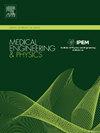Region-specific delamination strength of ascending thoracic aortic aneurysm of elderly hypertensive patients with bicuspid and tricuspid aortic valves
Abstract
Both ageing and hypertension are clinical factors that may lead to a higher propensity for dissection or rupture of ascending thoracic aortic aneurysms (ATAAs). This study sought to investigate effect of valve morphology on regional delamination strength of ATAAs in the elderly hypertensive patients. Whole fresh ATAA samples were harvested from 23 hypertensive patients (age, 71 ± 8 years) who underwent elective aortic surgery. Peeling tests were performed to measure region-specific delamination strengths of the ATAAs, which were compared between patients with bicuspid aortic valve (BAV) and tricuspid aortic valve (TAV). The regional delamination strengths of the ATAAs were further correlated with patient ages and aortic diameters for BAV and TAV groups. In the anterior and right lateral regions, the longitudinal delamination strengths of the ATAAs were statistically significantly higher for BAV patients than TAV patients (33 ± 7 vs. 23 ± 8 mN/mm, p = 0.01; 30 ± 7 vs. 19 ± 9 mN/mm, p = 0.02). For both BAV and TAV patients, the left lateral region exhibited significantly higher delamination strengths in both directions than the right lateral region. Histology revealed that disruption of elastic fibers in the right lateral region of the ATAAs was more severe for the TAV patients than the BAV patients. A strong inverse correlation between longitudinal delamination strength and age was identified in the right lateral region of the ATAAs of the TAV patients. Results suggest that TAV-ATAAs are more vulnerable to aortic dissection than BAV-ATAAs for the elderly hypertensive patients. Regardless of valve morphotypes, the right lateral region may be a special quadrant which is more likely to initiate dissection when compared with other regions.

 求助内容:
求助内容: 应助结果提醒方式:
应助结果提醒方式:


